Our today's guest is Nanoxia's FX EVO 120mm IFC 1300 RPM. This fans belongs to the company’s recently launched series of fans FX EVO. Two of the seven newly launched fans use 4-pin connectors, i.e. use PWM technology (automatic speed adjustment), whereas the rest (with 3-pin connectors) use the supplied IFC - "Intelligent Fan Controller”.
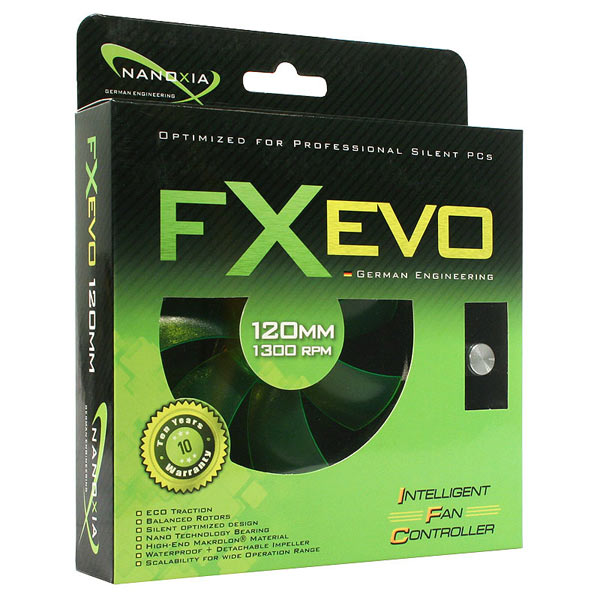
Nanoxia is a German company founded back in 2006. It aims to provide only the best products to specific target groups of gamers, modders, overclockers and benchmarkers. The company is notable for quality fans but its offer includes other cooling, gaming and modding oriented products. Nanoxia strived for implementation of the best technologies but they develop a lot of them as well, aiming to use only the best materials available. Today, when manufacturers are looking to offer the lowest warranties possible, FX EVO fans' 10 year warranty is really something.
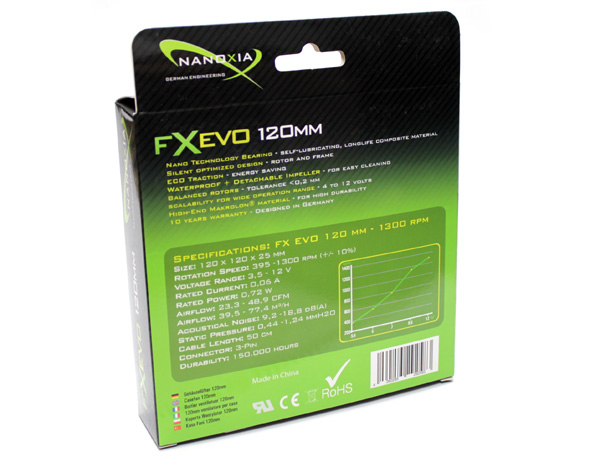
You'll find specs on the back. We noticed however that the specs claim the cable is a 50cm one, although our measurements revealed it’s only slightly longer than 43cm.
Specification: FX EVO 120mm IFC 1300 RPM
Air Flow (CFM): 23.3 - 48.9
Air Flow: 39.5 – 77.4 M^3/H
Bearing: Self-lubricating, longlife composite material
Cable Length (cm): ca.43
Connector: 3 Pin
Fan Speed (RPM): 395 – 1300 RPM (+/- 10%)
Voltage Range: 3.5 - 12V
Rated Current: 0.08 A
Rated Power: 0.72 W
Noise Level (dBA): 9.2 – 18.8
Static Pressure (mmAq): 0.44 - 1.24
Warranty (years): 10
Weight (g): 107
Dimensions (mm): 120 (l) x 120 (w) x 25 (h)
Durabilty: 150.000 Hours
Nanoxia’s earlier series came only with Vibekillerbolts (anti vibration bolts) but now each fan from FX EVO series comes with four anti shock bolts and four screws. ICF „Intelligent Fan Controller“ comes only with fans that use 3-pin connectors.
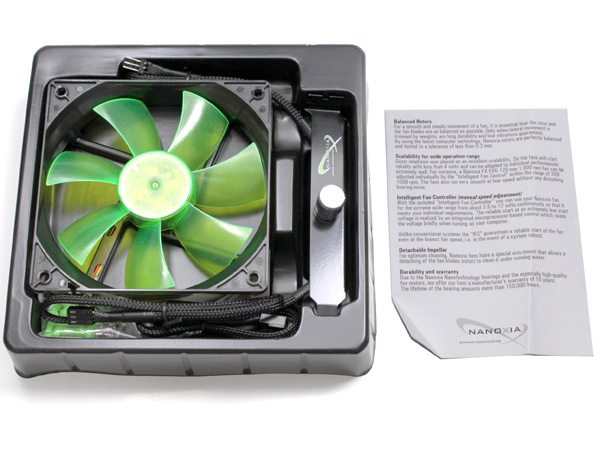
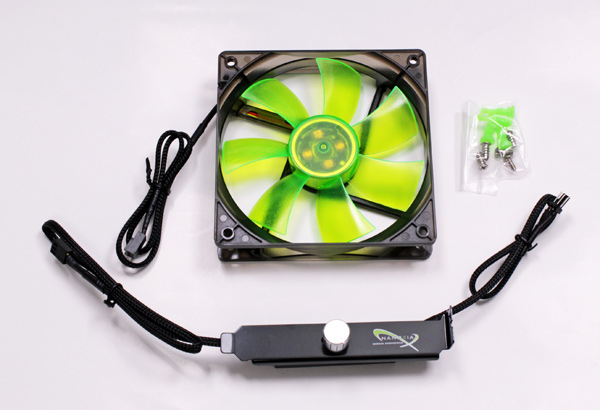
The propeller is UV reactive and will glow green under UV light. As you can see, the propeller and the frame are almost transparent. The build seems to be a quality one and the fans are made of high-tech polycarbonate Makrolon made by Bayer Material Science. The frames and rotors are quite elastic, which tends to contribute to durability. Namely, it will bend if you try hard but as soon as you let go, everything will be back to normal. The used material should also keep its shape in high temperature scenarios, but we don’t think, or at least hope, that anyone’s rig will hit temperatures that would melt plastic. The finishing touches are nice and there are no sharp ledges.
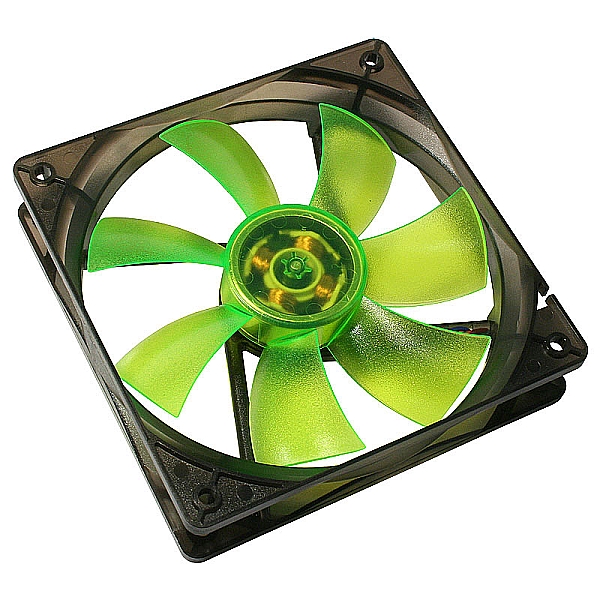
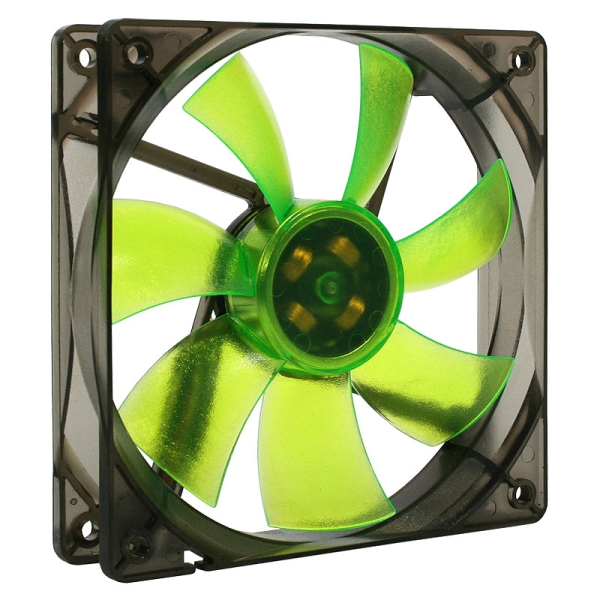
For optimum cleaning, Nanoxia fans have a special axis mount that allows a detaching of fan rotor to clean it under running water. What’s particularly interesting for EF EVO fans is that they can run under water. We really wanted to test this but dipping them in an aquarium was too much of a risk, since I was afraid I’ll make minced meat out of my goldfish.

FX EVO fan uses nano technology bearing - self-lubricating, longlife composite material. This ensures longevity and is the reason behind the 10 year warranty. Note that particles larger than a nanometer cannot penetrate into the bearing and damage it.

The ECO traction allows a very smooth start and effective conversion of electrical energy into kinetic energy. The fans will start reliably with less than 4 volts and can be adapted to individual performances extremely well. IFC (Intelligent Fan Controller) that comes with the fan is a nice feature if you don’t own a fan controller. The cable from IFC to the fan is 25cm long, which, coupled with the fan’s 40cm cable, means you’ll be able to place it anywhere, regardless of the size of your case.
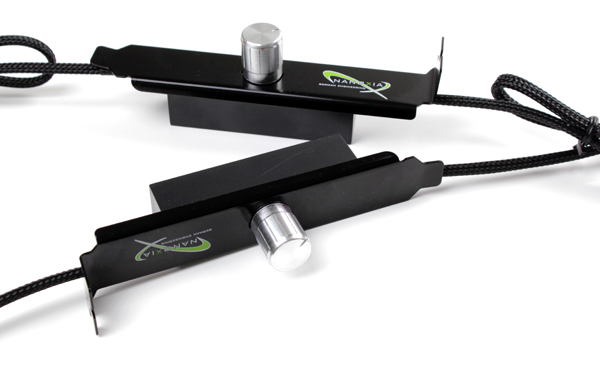
One side of IFC has a 3-pin male connector that goes to the motherboard, while the other side holds a emale 3-pin connector that connects to the fan. The cable is nicely sleeved and you won’t see the wires. Note that Nanoxia also makes various sleeved cables, such as 24-pin power connector extensions, which may be of interest to case modders.
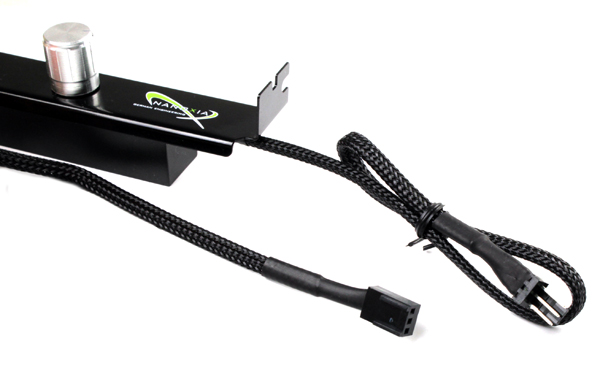
As you can see, IFC goes into a spare expansion slot.
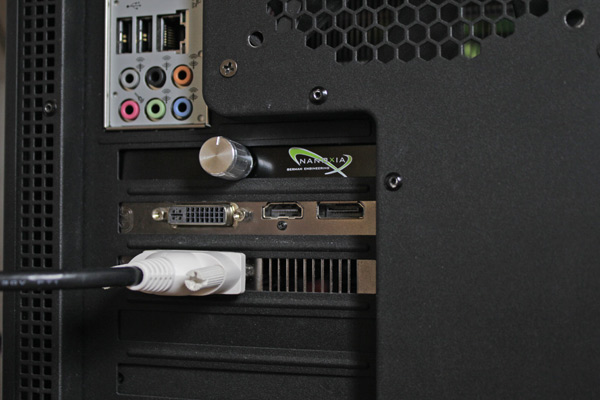
IFC has a large control wheel, which makes control much easier. Note that you’ll have to take it off when installing IFC, simply because it won’t fit through the hole. We had some trouble with this, which was quite strange since there’s no other way to install it in a case. Further inspection revealed that some glue ended up beneath the wheel, although this was not the case with the other two IFC controllers we had.
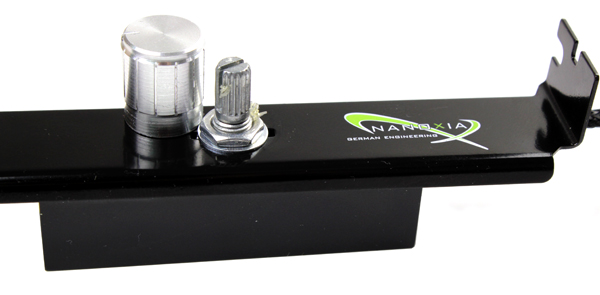

For testing we used Cooler Master 612S mounted on EVGA’s FTW3 motherboard in Corsair Obsidian 800D case (with three 900 RPM fans) at 22°C room temperature. We measured temperatures at Core i7 930’s overclocked clock (3.6GHz). In our tables, we used average temperatures of all four cores. We used GC-Extreme thermal paste for all our testing.
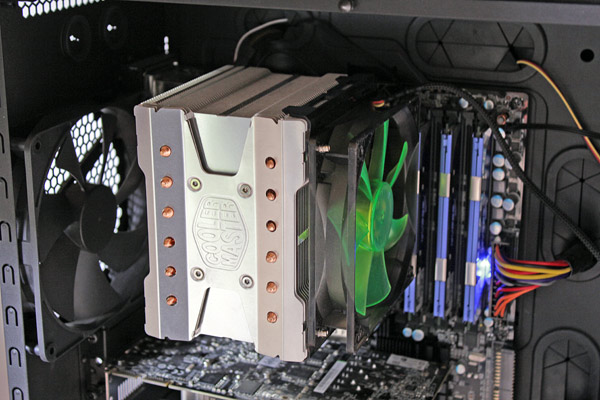
One part of the fan frame shows the spin direction.
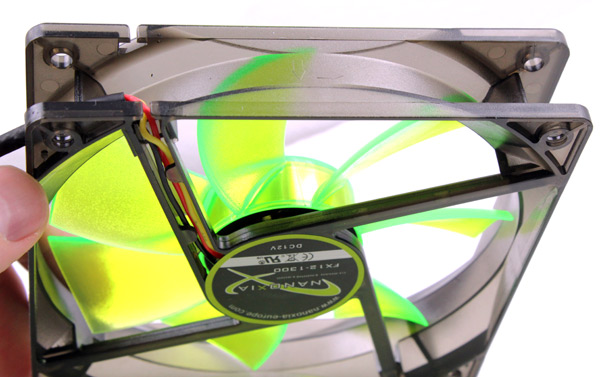
Mounting the fans on our Hyper 612S went well. All you need to do is take the plastic frames that come with the fans, tighten them with screws or anti-shock grommets to the fan and strap the entire thing to the cooler.
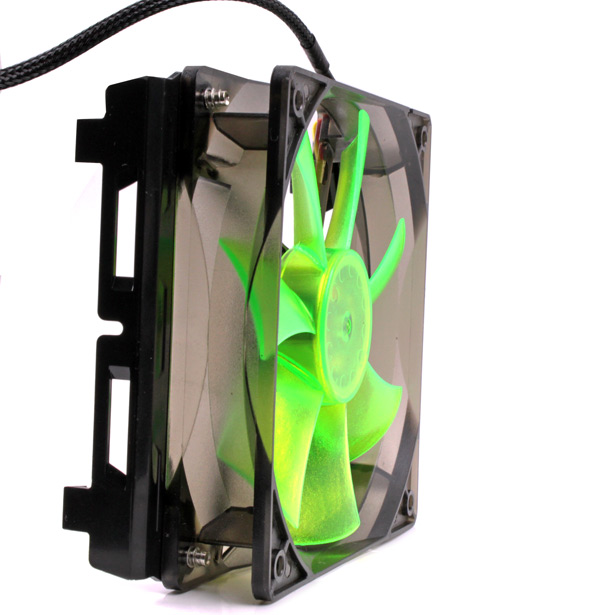
We had a bit of trouble here as it seems that the screws we received with the FX EVO 120mm IFC 1300 RPM are really hard to screw in. Nanoxia's screw is on the picture below, on the right.

Nanoxia FX EVO 120 mm IFC ranges from 395 – 1300 RPM (+/- 10%). The voltage range is from 3.5V to 12V. For our testing, we connected the fan to a Scythe three pin fan control connector without losing the option of manual RPM control. Using FX EVO 120 mm IFC controller gave the same result but IFC does not provide information of exact fan RPM. Still, it will be quite useful to those who have no digital fan controllers. Note that we could not stop fans entirely by using IFC fan controller and the lowest it will go is the minimum of about 400 RPM.
As far as loudness goes, the FX EVO 120 mm IFC 1300 RPM is a quality fan. It's almost inaudible at about 800 RPM, but its maximum of 1300 RPM isn't very loud either. We’ve noticed that it’s only slightly louder than our recently tested FX EVO 120mm 1500PWM fan, but the difference is minute.
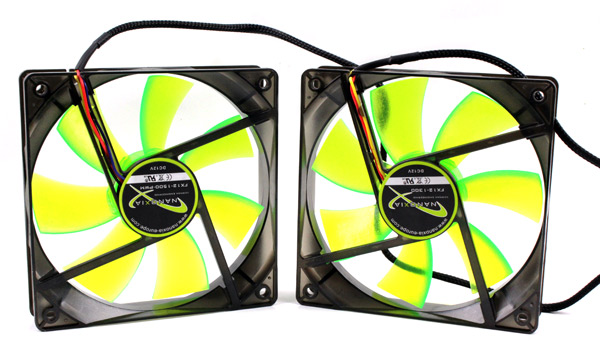
The fan also runs very smoothly at low speeds without any disturbing bearing noise. The fan starts immediately after turning the computer on, regardless of whether you left it at below 4 volts before you shut down.
FX EVO 120mm 1500PWM fan scored a little bit better than the FX EVO 120mm IFC 1300 RPM or the reference fan on our Hyper 612S. The reference fan is not a PWM and spins at 1300 RPM. When running at maximum RPM, both the FX's fans are slightly louder than that on the Hyper. However, FX EVO 120 mm 1500PWM will remain inaudible most of the time thanks to the PWM control, but of course you can easy regulate the speed of the FX EVO 120mm IFC 1300 RPM using the IFC controller.
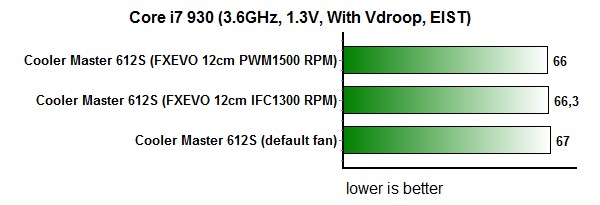
Conclusion
Nanoxia FX EVO 120mm IFC 1300 RPM boasts a quality build - it uses nano bearing technology, frames and rotors are made of robust polycarbonate, smooth edges, removable propeller and a 40cm sleeved cable. Another great thing about this fan is that it comes with IFC (Intelligen Fan Controller). Nanoxia's fan has a well implemented linear control range, so that speed steps are very gentle and hardly perceptible. We’ve seen that it provides good performance without being too loud.
As far as cons go, the screws are quite hard to screw into the frame and we had some issues by removing the control wheel from the supplied IFC controller. Thankfully, it turned out to be only a bit of stray glue and an isolated case, since it wasn’t the case with our other IFC controllers. These are literally the only two cons on FX EVO 120mm IFC 1300 RPM, and luckily they’re totally unrelated to performance and quality of the fan itself.
Nanoxia FX EVO 120mm IFC 1300 RPM goes for €13.99 at pc-cooling.de, which is where we got our testing sample. Unlike the €1 cheaper FX EVO 120 mm PWM 1500 RPM, our today’s fan boasts IFC controller which provides manual RPM control. Nanoxia offers a manufacturer’s warranty of 10 years, which makes the deal even sweeter and testifies of the quality build that the company offers with its products.




